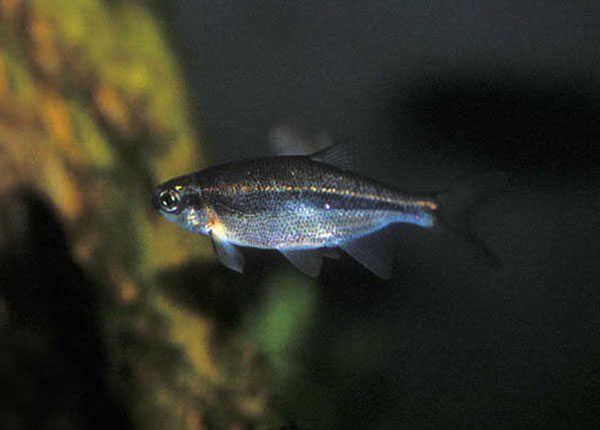| Leuciscidae (Minnows), subfamily: Pogonichthyinae |
| 18 cm TL (male/unsexed) |
|
demersal; freshwater; depth range - 0 m |
| North America: Pacific Slope drainages from Nass River in British Columbia, Canada to Rogue, Klamath and Columbia River drainages in Oregon, Idaho, Nevada and Wyoming, USA; Bonneville basin in south Idaho, west Wyoming and Utah, USA; Peace River system (Arctic basin) in British Columbia and Alberta, Canada. Introduced into upper Missouri River basin ni Montana and Colorado River drainage in Wyoming, Utah, Colarado and Arizona, USA. |
|
Dorsal soft rays (total): 8-12; Anal soft rays: 10-24. Body deep and compressed; dorsal fin origin far behind pelvic fin origin; caudal peduncle narrow; caudal fin deeply forked; snout short and point; mouth terminal; eye large; axillary process at pelvic fin base; lateral line decurved, complete wit 52-67 scales; dorsal fin with 8-12 rays (usually 10); anal fin with 10-24 rays (usually 15); intestine long; peritoneum silver; pharyngeal teeth 2,4-4,2 to 2,5-5,2. Olive-gray to brown above, clear to yellow streak above dark stripe along side; red above pectoral fin base on large individuals; clear to yellow-brown fins. Breeding males are brassy yellow, bright red along lower side (Ref. 86798). |
| Inhabits runs and flowing to standing pools of headwaters, creeks, and small to medium rivers as well as lakes and ponds. Usually found over mud or sand, often near vegetation (Ref. 5723, 86798). Forms schools (Ref. 1998). Fry feed on diatoms, copepods, ostracods, and other small planktonic and demersal crustaceans (Ref. 1998). Diet changes to terrestrial and aquatic insects, algae, mollusks, fish eggs (including their own), and small fishes like other redside shiners, other minnows, and trout (Ref. 1998). Preyed upon by mergansers, loons, and mink (Ref. 1998). |
|
Least Concern (LC); Date assessed: 01 March 2012 Ref. (130435)
|
| harmless |
Source and more info: www.fishbase.org. For personal, classroom, and other internal use only. Not for publication.
